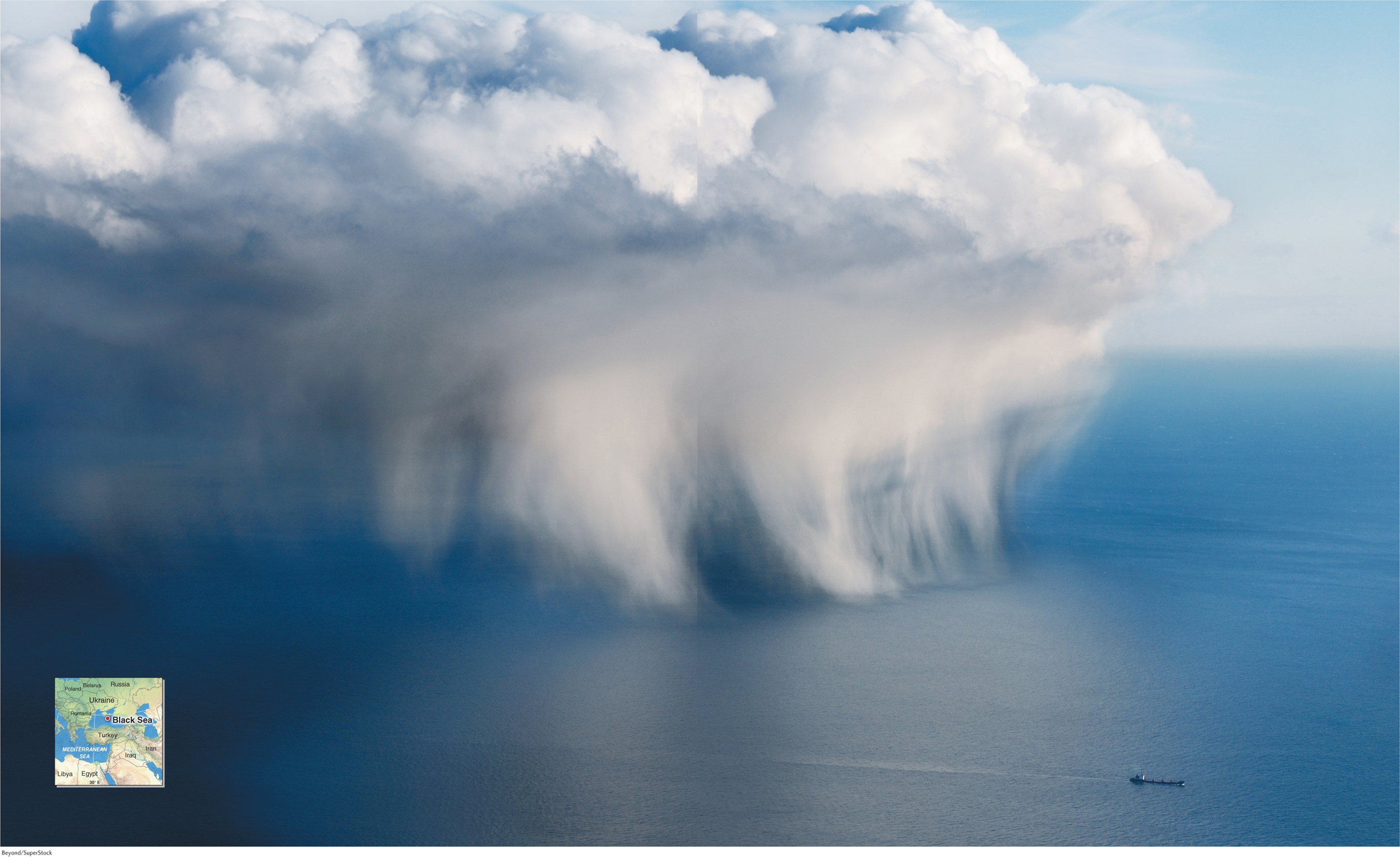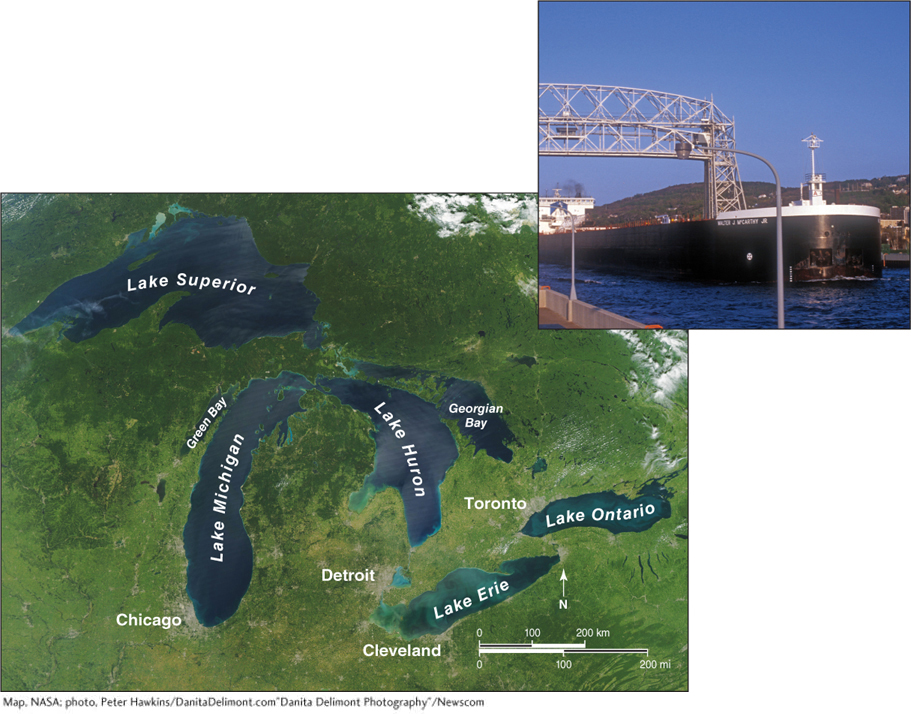Water in the Atmosphere
3

LIVING PHYSICAL GEOGRAPHY
How do hurricanes weigh trillions of tons yet remain suspended in the air?
Why does water form on the outside of a glass containing a cold drink?
What is fog?
How big can hailstones get?
THE BIG PICTURE
Evaporation of water from the oceans creates atmospheric humidity, clouds, and precipitation. Clouds in the atmosphere are intimately tied to Earth’s climate system.
LEARNING GOALS
After reading this chapter, you will be able to:
3.1
Explain what the hydrologic cycle is and why it is important.
3.2
Distinguish between the different ways of expressing atmospheric humidity and explain how each works.
3.3
Describe the role of atmospheric instability in cloud formation.
3.4
Identify and describe the major cloud types.
3.5
Name the different kinds of precipitation and explain how each forms.
3.6
Assess the interaction between cloud feedbacks and climate.
THE HUMAN SPHERE:
Evaporation and the Great Lakes
THE GREAT LAKES straddle the border of the United States and Canada. They hold roughly 18% of the world’s surface freshwater and together form the largest system of freshwater lakes in the world. About 10% of the population of the United States and 25% of the population of Canada live in the watershed of the lakes. The Great Lakes and the St. Lawrence River (which connects the lakes to the Atlantic Ocean) support a $34 billion shipping industry. The level of the lakes remained stable over the last century—

Why are the water levels of the Great Lakes dropping? The single most important factor is increased evaporation from the lakes. The lake levels represent a balance between evaporation on one hand and precipitation and resulting stream inflow on the other. If evaporation increases but precipitation and stream inflow do not, the lake levels will drop.
Ice cover is also important. According to the National Oceanic and Atmospheric Administration (NOAA), in the last 40 years, ice cover on Lake Superior has been reduced by 70% as a result of warmer water. A cover of ice decreases evaporation. With less ice, there is more evaporation. Similarly, with warmer water, there is more evaporation.
Scientists do not know if the level of the Great Lakes will continue to fall. The current drop might be part of a long-
We begin this chapter by exploring evaporation of water into the atmosphere. We then examine the different units used to express atmospheric humidity, and we explore the conditions necessary to produce clouds and precipitation. Next we describe cloud groups and precipitation types. Finally, we explore the interaction between cloud feedbacks and climate.